Oh look, it’s another PSA (and all in the same week)!! This time my friends, I’d  like to ask you all how you’re feeling. So how are things?
like to ask you all how you’re feeling. So how are things?
You see I’m asking because I’ve noticed that a fair few people seem to be either a little overwrought and on edge, or feeling completely drained at the moment. It’s beginning to look a little bit like people are feeling somewhat overloaded.
Signs of Overload
We’ve all been to places where we’ve felt a bit off, right? Or felt the change in subtle energies with the waxing and waning of the moon? This is because we humans, even those of us who try to cling to the physical, tend to react to the energy in our environments. And there are any number of environmental factors that can kick up the energy in a place and leave you feeling…off. (This is what I mean by “overload”.)
 Some of the most common environmental factors that lead to this are things like “psychic impressions” left by horrid historical events; the influence of celestial bodies (as the aforementioned example of the lunar cycle); the time of year (liminal points especially); strong emotions from other humans; and especially strong emotions from other humans en masse. Of course, the degree to which these things will affect you very much depends on your personal level of sensitivity, and the most sensitive and empathic typically themselves more acutely affected than others.
Some of the most common environmental factors that lead to this are things like “psychic impressions” left by horrid historical events; the influence of celestial bodies (as the aforementioned example of the lunar cycle); the time of year (liminal points especially); strong emotions from other humans; and especially strong emotions from other humans en masse. Of course, the degree to which these things will affect you very much depends on your personal level of sensitivity, and the most sensitive and empathic typically themselves more acutely affected than others.
If this is you, you may find yourself feeling on edge or particularly emotional (when you have no discernible reason to be so). You may also feel as though there are too many things going on, a sensation like you’re somehow running out of time, or like you just can’t settle. Conversely, you may feel inexplicably exhausted and drained (likely from the effort of trying to process the overload). And while we’re on the subject, how are you sleeping? Because if you’re on the “inexplicably antsy” end of the spectrum, I’m betting you’re also not sleeping for shit either – at least not without help.
Here is where self-care comes in. So what kind of self-care can you practice when the causes are from more subtle sources?
Discernment
Your first step is to take a deep breath and try to figure out what’s going on. The question you need to ask yourself here is if these emotions are really yours (ie intrinsic to you), or if you are reacting to something external.
In some cases, this is simple. For example, if you have only just started to feel like this after entering an environment but feel fine when you leave, then that can be a pretty clear indicator that the cause was external. However in other cases, this is where self-knowledge comes in and knowing the shape of your own thoughts. For those of you who regularly practice meditation, this is probably relatively easy for you. For those of you who aren’t there yet though, this is where grounding and centering can be helpful.
Grounding and Centering
From the perspective of self-care, or “psychic first aid” (or whatever the hell else you want to call it), grounding allows you to rid yourself of excess energy, and centering helps you to restore your balance. If you suspect overload and are not sure if what you are experiencing is external or not then try grounding and centering. It’s a great way of shifting that excess energy into the earth, giving you the space you need to take stock and figure out your next move.
Feel better now? Then the cause was likely external.
Feel about the same? You need to look within.
Many forms of grounding and centering involve some kind of tree visualization, during which the person envisions themselves as a tree with roots sinking down into the earth and branches reaching up to the heavens. However, if you’re not really in a place where you can do that because you’re just too wired, I have a kickass alternative that a friend of mine came up that is great for kinesthetic types (thanks Becky!).
Becky’s method is based on the realization that the iron in our bodies is a match for the iron within the earth, and the iron that is to be found in space (which created some of humankind’s earliest iron artifacts). Leveraging the principle of “like attracts like”, Becky’s method involves concentrating on, and feeling for the iron in one’s own bloodstream, then mentally feeling out and reaching for the like substance in the earth, and in the skies above. If you do it right, it should make you feel like someone just opened a sluice, like that excess is draining out, and like you’re suddenly more present.
Shielding
So you’ve grounded and centered, and figured out that you’re getting reamed by whatever the hell is going on where you are. Now what?
Now you shield in order to minimize if not outright stop the factors causing the overload from getting through. Depending on how extreme the conditions are where you are, you may need to keep an eye on and redo your shields as needed. Here, I would advise you to see these shields as being “in addition to” whatever else you use for defense (if you do). This is more like ‘magical sunblock’ as opposed to hardcore defenses.
So how do you crack out the magical sunblock for a bit of continued sanity?

One of the most commonly touted methods is the “disco ball” method, in which the individual visualizes themselves within a disco ball. Of course, you’re not only visualizing here, but also willing this to be so. It won’t work unless you’re fully invested.
With the disco ball, the idea is that the outer mirrors reflect away anything unwanted, thus leaving the person within protected and insulated. Give it a try, and see how you feel. How does the imagery work in your head? Because this is the funny thing about this kind of skill: not all imagery works equally in all people. This makes sense because not all people get equally invested in the same things, and like I said, you need to be invested. So if this is you, you need to find imagery representative of the same principles then work to build that imagery. Just be aware though that how you build your shields can affect how others perceive and react to you. I know some who prefer to create their shields out of a kind of woven net rather than an impenetrable and reflective surface as they believe that that degree of shielding impedes their ability to work.
Purification
Finally, don’t forget purification. In my opinion, purification is one of those massively important but generally somewhat neglected practices among modern Pagan practitioners. Which is a pity because we pick up so much dreck in our lives that it’s pretty easy to become somewhat bogged down and heavy. This is where purification comes in, both for homes and individuals.
Keeping your home clean is your most basic home purification, but it’s also  good to try and burn purifying récels (incense) around your home such as either mugwort, or a rosemary/vervain/juniper mixture. This smoke can also be used for the self too (I like to burn it in a cast iron Dutch oven and just stand over it so that I’m enveloped by the smoke).
good to try and burn purifying récels (incense) around your home such as either mugwort, or a rosemary/vervain/juniper mixture. This smoke can also be used for the self too (I like to burn it in a cast iron Dutch oven and just stand over it so that I’m enveloped by the smoke).
Taking cleansing baths with cleansing herbs like rosemary or birch is also helpful; saltwater is also good. I also like to keep herb oils on hand for emergency situations – hyssop oil is good for this.
These are clearly not the only purification methods that you can use; I could write an entire post just on purification (and I may just do so at some point). This whole post is intended as more of a rough and ready survival guide (and reminder to take care of you).
Well, the gym is calling (more self-care), and I’ve got to angry-run on a treadmill. Be well.

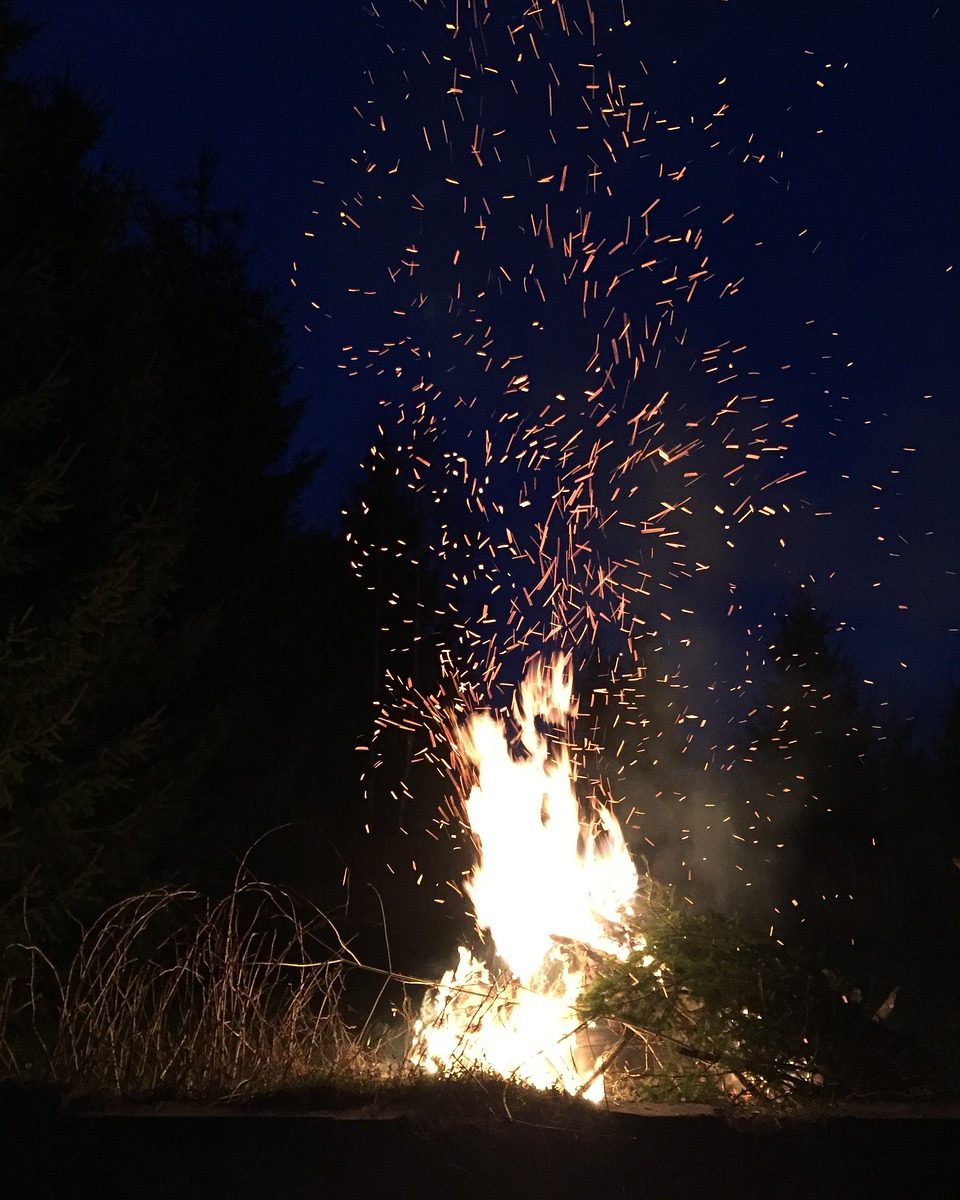



 entice you into some kind of oath, your first move is always research. Go find out everything you can about them, and if it’s not available in physical sources, go pester allies for more information. Because there are a whole bunch of things you need to know here. For example, you need to know their MO; if they’re presenting themselves as they actually are; how others have fared dealing with them; and if they have a GSOH and enjoy long walks on the beach at sunset. Because all of that will not only help you figure out *who* you’re dealing with, but also help you better word any oaths you make so that you can do stuff like insert more protective clauses (which is #winning, trust me).
entice you into some kind of oath, your first move is always research. Go find out everything you can about them, and if it’s not available in physical sources, go pester allies for more information. Because there are a whole bunch of things you need to know here. For example, you need to know their MO; if they’re presenting themselves as they actually are; how others have fared dealing with them; and if they have a GSOH and enjoy long walks on the beach at sunset. Because all of that will not only help you figure out *who* you’re dealing with, but also help you better word any oaths you make so that you can do stuff like insert more protective clauses (which is #winning, trust me).


 Having said that though,
Having said that though, 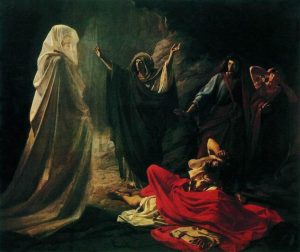 of the matter is that magical practitioners have been finding helping spirits and making pacts with them for a very, very long time. And like wands, familiars traverse a wide range of different cultures (albeit under different names – obviously).
of the matter is that magical practitioners have been finding helping spirits and making pacts with them for a very, very long time. And like wands, familiars traverse a wide range of different cultures (albeit under different names – obviously). Wilby’s period of study. Hall traces a pattern of witches working with mound-connected elves from the tenth century Old English magico-medical charm Wið Færstice and term ælfs?den (literally “elf-Seiðr”, or “elf-magic”); to Martin Luther’s account of being “shot” by a neighborhood witch; and finally to Isobel Gowdie’s accounts of encountering the Queen of Elfhame in a mound and seeing elves fashioning the shot. I personally take it somewhat further and point to the portrayal of Frey and Freyja in the Ynglingasaga. Freyja as the sacrificial priestess (and as we know, goddess associated with the form of magic known as “Seiðr”) ends up overseeing the cult to her brother, Freyr (who is associated with elves), even as he lies in the burial mound. The people bring offerings to the mound for peace and good seasons, and so even in death, he possesses a power that his sister does not.
Wilby’s period of study. Hall traces a pattern of witches working with mound-connected elves from the tenth century Old English magico-medical charm Wið Færstice and term ælfs?den (literally “elf-Seiðr”, or “elf-magic”); to Martin Luther’s account of being “shot” by a neighborhood witch; and finally to Isobel Gowdie’s accounts of encountering the Queen of Elfhame in a mound and seeing elves fashioning the shot. I personally take it somewhat further and point to the portrayal of Frey and Freyja in the Ynglingasaga. Freyja as the sacrificial priestess (and as we know, goddess associated with the form of magic known as “Seiðr”) ends up overseeing the cult to her brother, Freyr (who is associated with elves), even as he lies in the burial mound. The people bring offerings to the mound for peace and good seasons, and so even in death, he possesses a power that his sister does not. ” The transfer of George was further complicated by the queen of the Lowlanders, who demanded that Goodwin stop attempting to have George as his own personal spirit. At first Goodwin was a little resistant, but the queen insisted that if he would not willingly show her this preference, he should never see any of the Lowlanders. She wanted to be his number-one contact with the spirit world. Goodwin had little choice but to agree to her terms. As a consolation, George agreed to answer any questions directed at him as long as Goodwin turned his back and did not look directly where George stood. However, Goodwin could not understand the spirit very clearly, as he spoke in a low, soft voice close to Mary’s ear. So throughout their relationship, Goodwin relied on Mary to communicate with George.”
” The transfer of George was further complicated by the queen of the Lowlanders, who demanded that Goodwin stop attempting to have George as his own personal spirit. At first Goodwin was a little resistant, but the queen insisted that if he would not willingly show her this preference, he should never see any of the Lowlanders. She wanted to be his number-one contact with the spirit world. Goodwin had little choice but to agree to her terms. As a consolation, George agreed to answer any questions directed at him as long as Goodwin turned his back and did not look directly where George stood. However, Goodwin could not understand the spirit very clearly, as he spoke in a low, soft voice close to Mary’s ear. So throughout their relationship, Goodwin relied on Mary to communicate with George.” 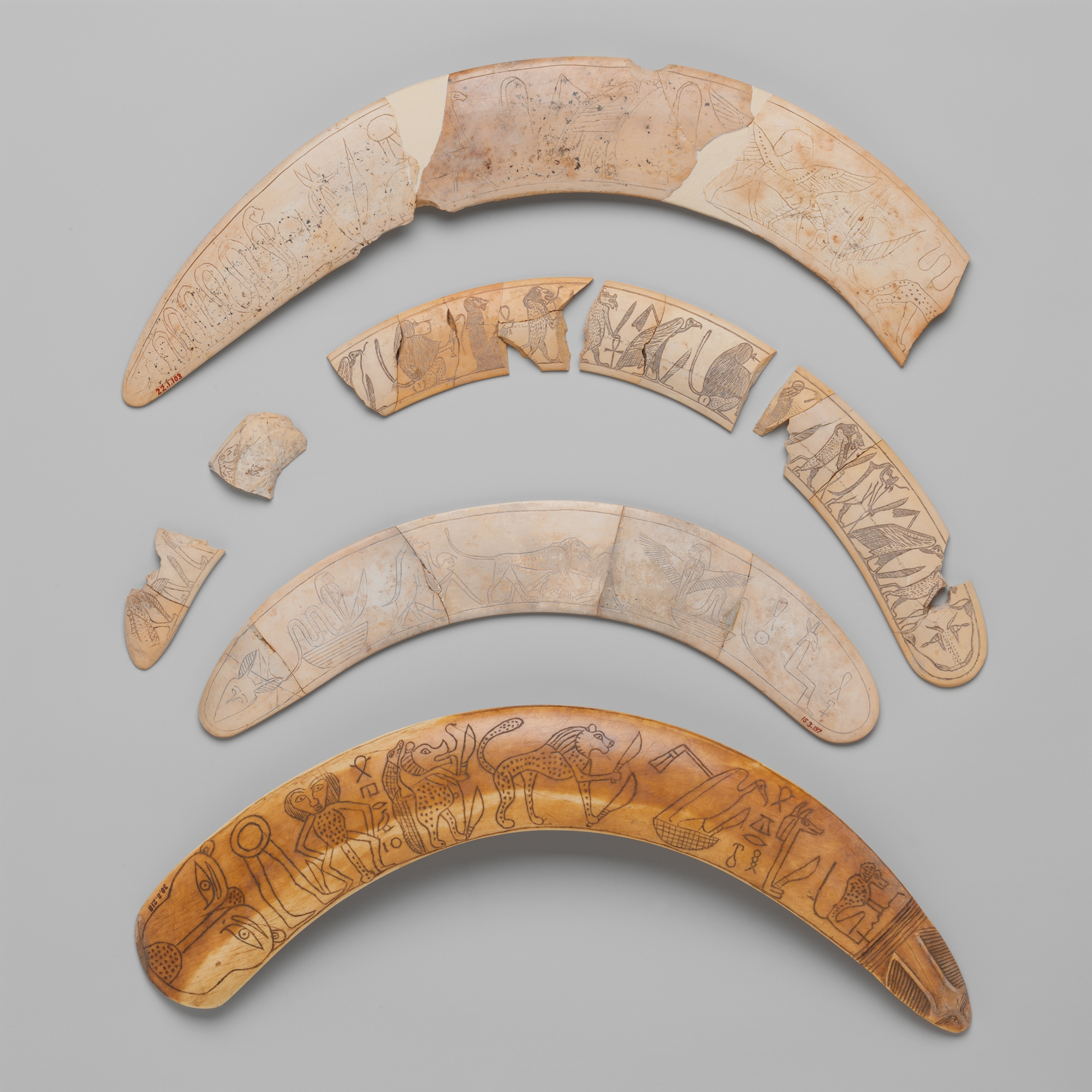
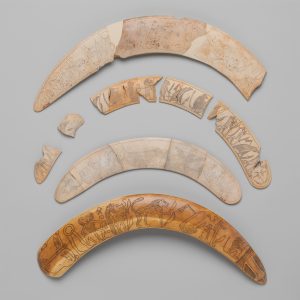

 carried by modern practitioners. For example, the Oseberg staff measures 107cm; which is a far cry from the usual image of the seer/ess with a staff that comes up to at least shoulder length.
carried by modern practitioners. For example, the Oseberg staff measures 107cm; which is a far cry from the usual image of the seer/ess with a staff that comes up to at least shoulder length.


 accordingly, as I do respect her). I do think she makes an excellent point about the duotheisms held dear by the earlier Pagan revivalists, and their incompatibility with both modern and ancient ideas on deity. But does that mean that we should once more throw out yet another baby with the water it was bathing in? (Which per
accordingly, as I do respect her). I do think she makes an excellent point about the duotheisms held dear by the earlier Pagan revivalists, and their incompatibility with both modern and ancient ideas on deity. But does that mean that we should once more throw out yet another baby with the water it was bathing in? (Which per  I shall go into a hare,
I shall go into a hare,

 relationship which has historically tended to exist between people of equal status. Traditionally, differing social status was thought to be a barrier to friendships outside one’s social milieu. Of course nowadays (at least in our society), that is not always the case, and there is some blurring of the lines. However, even now, it can be hard to ignore the power differentials at play in friendships between people of unequal status. One example which Thomas gives is that of the friendship with one’s boss. Yes, a friendship can exist there, however, that boss may one day be called upon to fire you.
relationship which has historically tended to exist between people of equal status. Traditionally, differing social status was thought to be a barrier to friendships outside one’s social milieu. Of course nowadays (at least in our society), that is not always the case, and there is some blurring of the lines. However, even now, it can be hard to ignore the power differentials at play in friendships between people of unequal status. One example which Thomas gives is that of the friendship with one’s boss. Yes, a friendship can exist there, however, that boss may one day be called upon to fire you. The final form of reciprocal relationship that Rev. Thomas gives in his book is that of Patrons and Clients. This is a form of relationship in which one party has vastly more resources than the other, and in which the Patron would essentially take care of his clients in exchange for that client’s service and loyalty. Sound familiar? This is the form of reciprocal relationship which, if we’re truly honest with ourselves, most closely matches what we humans have with the majority of non-human persons we interact with.
The final form of reciprocal relationship that Rev. Thomas gives in his book is that of Patrons and Clients. This is a form of relationship in which one party has vastly more resources than the other, and in which the Patron would essentially take care of his clients in exchange for that client’s service and loyalty. Sound familiar? This is the form of reciprocal relationship which, if we’re truly honest with ourselves, most closely matches what we humans have with the majority of non-human persons we interact with. dealing with the gods and Other, the old rules probably still apply.
dealing with the gods and Other, the old rules probably still apply.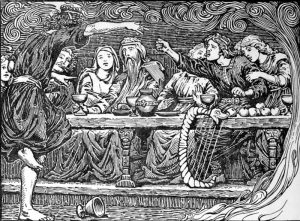
 Danann; Odin was described as being the foremost among the Norse (at least per Snorri); and among the Greeks, it was Zeus who was believed to rule the Olympians. Flowing down from the High one, domains/riches and roles are divided accordingly; with the domains perhaps representing the physical support provided by the High God/Patron, and the roles performed by each of the clients/deities the service rendered to the High God. This pattern is also repeated between the other gods and their respective servants (such as with Freyr and Skirnir, and Thor with Þjálfi and Röskva).
Danann; Odin was described as being the foremost among the Norse (at least per Snorri); and among the Greeks, it was Zeus who was believed to rule the Olympians. Flowing down from the High one, domains/riches and roles are divided accordingly; with the domains perhaps representing the physical support provided by the High God/Patron, and the roles performed by each of the clients/deities the service rendered to the High God. This pattern is also repeated between the other gods and their respective servants (such as with Freyr and Skirnir, and Thor with Þjálfi and Röskva).
 wands and how they relate to the matter of authority. For now though, I’ll leave you with the following words taken from the Rig Veda (RV 1.26.8).
wands and how they relate to the matter of authority. For now though, I’ll leave you with the following words taken from the Rig Veda (RV 1.26.8).
 “Whether or not there are two set courts of Fairy, one thing that is clear is that the social structure does seem to operate as a hierarchy ruled ultimately by kings and queens. When we look at the bulk of the folklore it is usually a Fairy Queen who holds power, often with an unnamed King at her side or else ruling alone. In only a few Irish examples do we see solitary Fairy Kings. In the later folklore and ballads the Fairy Queens and Kings are often unnamed, going simply by their titles, but in older mythology and some local folklore we do have examples of named Fairy Queens and Kings, often beings who we know were once Gods.”
“Whether or not there are two set courts of Fairy, one thing that is clear is that the social structure does seem to operate as a hierarchy ruled ultimately by kings and queens. When we look at the bulk of the folklore it is usually a Fairy Queen who holds power, often with an unnamed King at her side or else ruling alone. In only a few Irish examples do we see solitary Fairy Kings. In the later folklore and ballads the Fairy Queens and Kings are often unnamed, going simply by their titles, but in older mythology and some local folklore we do have examples of named Fairy Queens and Kings, often beings who we know were once Gods.” because they are the most powerful. Power is a universal passport to authority other others, and it doesn’t matter if a spirit or fairy belongs to a particular court or hierarchy, inherent power is always recognized. Especially by those who appreciate the ability to size up and not antagonize those who are stronger as an excellent means of ensuring continued existence.
because they are the most powerful. Power is a universal passport to authority other others, and it doesn’t matter if a spirit or fairy belongs to a particular court or hierarchy, inherent power is always recognized. Especially by those who appreciate the ability to size up and not antagonize those who are stronger as an excellent means of ensuring continued existence.
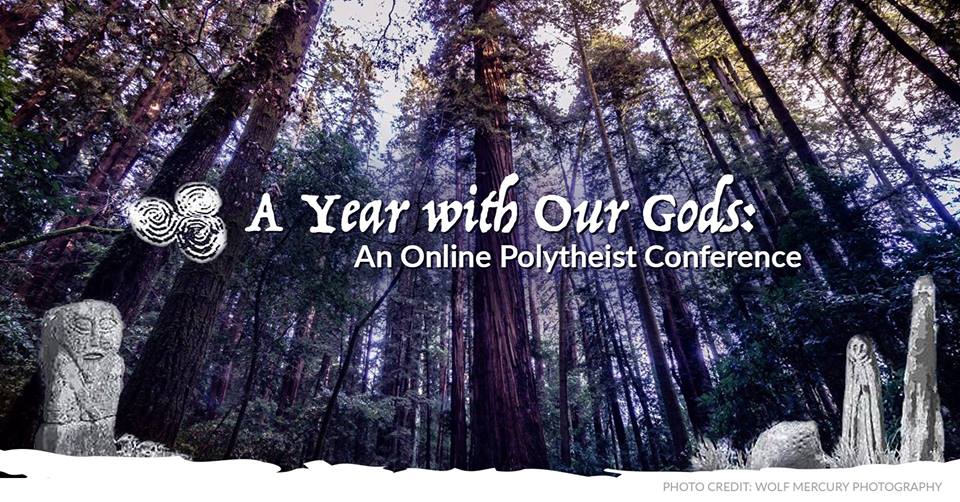

 goddess in the land. Always an advocate of authentic Irish culture, Lora also described the continuing importance of Brighid in Ireland, and the traditions that persist to this day.
goddess in the land. Always an advocate of authentic Irish culture, Lora also described the continuing importance of Brighid in Ireland, and the traditions that persist to this day. fire up my ass. I’ve been hardcore getting things done! For anyone who is interested in Lora’s work and a chance to experience trance as she does it, she does actually offer journeying courses,
fire up my ass. I’ve been hardcore getting things done! For anyone who is interested in Lora’s work and a chance to experience trance as she does it, she does actually offer journeying courses, 

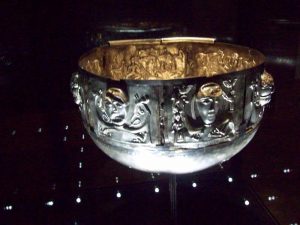 her experiences with receiving healing as a cancer patient, and about how she was even able to perceive who was sending her healing by tracing back the golden strands of healing energy she saw entering her body. She then talked about how to go about healing and some of her traditions surrounding her healing practices – a lot of it was stuff that I could see my family engaging in, but it also stuff they never really explained to me in a coherent way. I really appreciated Julia making the point that people shouldn’t promise to pray or heal others if they’re not actually going to do it. I think we all see a lot of promises to pray for people or light candles for them online, but I often wonder how many people actually do it. Julia also touched on healing cauldrons, but sadly didn’t get to spend as much time on that as I hoped.
her experiences with receiving healing as a cancer patient, and about how she was even able to perceive who was sending her healing by tracing back the golden strands of healing energy she saw entering her body. She then talked about how to go about healing and some of her traditions surrounding her healing practices – a lot of it was stuff that I could see my family engaging in, but it also stuff they never really explained to me in a coherent way. I really appreciated Julia making the point that people shouldn’t promise to pray or heal others if they’re not actually going to do it. I think we all see a lot of promises to pray for people or light candles for them online, but I often wonder how many people actually do it. Julia also touched on healing cauldrons, but sadly didn’t get to spend as much time on that as I hoped.
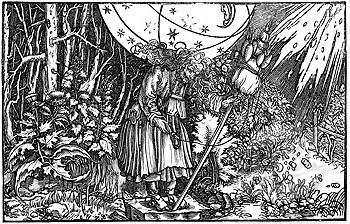
 I’m currently working through the first round of editing this insomnia-fueled, oath-bound mess before handing it over to my beta readers, but it’s coming in at around 78k words so far. So it was no small undertaking. In case any of you are curious, it is a book about Pagan/Heathen/Witchy things. But more specifically, it’s a book of Helrunan and Seidr. My working title is “The Path of Ivy”, and it focuses on more chthonic practice. I’m also reproducing the liturgy for the
I’m currently working through the first round of editing this insomnia-fueled, oath-bound mess before handing it over to my beta readers, but it’s coming in at around 78k words so far. So it was no small undertaking. In case any of you are curious, it is a book about Pagan/Heathen/Witchy things. But more specifically, it’s a book of Helrunan and Seidr. My working title is “The Path of Ivy”, and it focuses on more chthonic practice. I’m also reproducing the liturgy for the 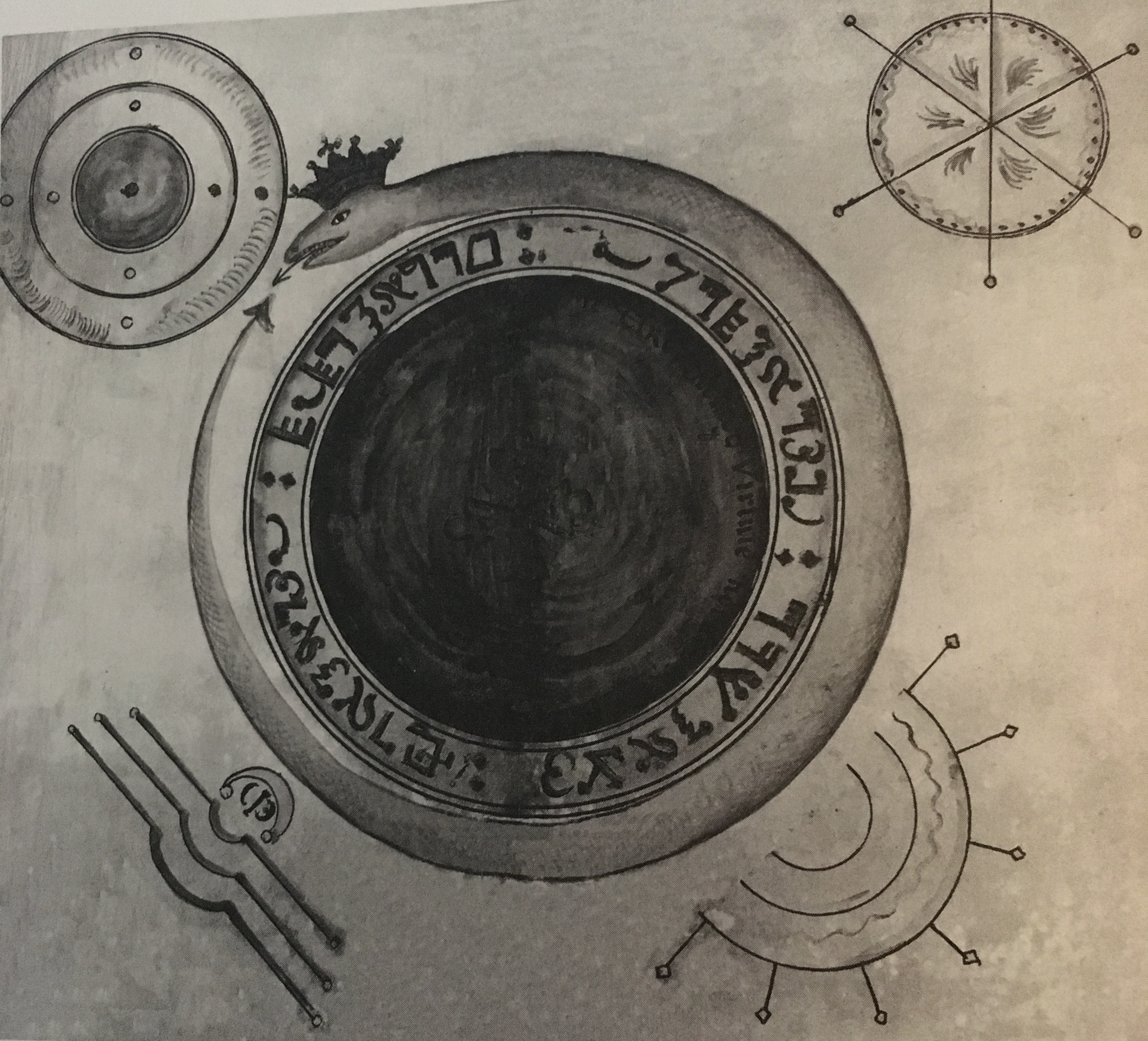
 granted and covered by phrases such as “do the usual”. It is no coincidence that the ouroboros features in later grimoires such as the 18th century Clavis Inferni. Indeed, it’s likely that the use of a protective circle in the form of an ouroboros and directions marked out (and associated with elemental entities) were inherited magical tech from those old-school Graeco-Egyptian magicians (Skinner 87).
granted and covered by phrases such as “do the usual”. It is no coincidence that the ouroboros features in later grimoires such as the 18th century Clavis Inferni. Indeed, it’s likely that the use of a protective circle in the form of an ouroboros and directions marked out (and associated with elemental entities) were inherited magical tech from those old-school Graeco-Egyptian magicians (Skinner 87).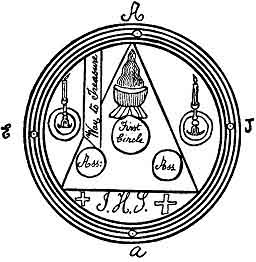
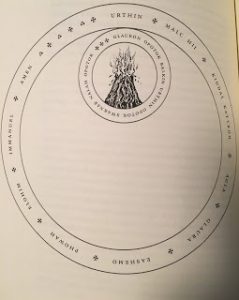
 This idea of going to “play” with a different cosmos can be hard to get your head round. After all, everyone thinks their worldview and idea of how things are in the cosmos is right, right? Relativism can be hard, especially when it comes to deeply held beliefs that are often also tied up in personal experience.
This idea of going to “play” with a different cosmos can be hard to get your head round. After all, everyone thinks their worldview and idea of how things are in the cosmos is right, right? Relativism can be hard, especially when it comes to deeply held beliefs that are often also tied up in personal experience. sub-level. Even worse, there are some rumors that some of those grimoires even made it down to the basement a few centuries before the current crop of magic users started their sneaking expeditions down there. So you know, that’s a whole lot to take into consideration.
sub-level. Even worse, there are some rumors that some of those grimoires even made it down to the basement a few centuries before the current crop of magic users started their sneaking expeditions down there. So you know, that’s a whole lot to take into consideration.